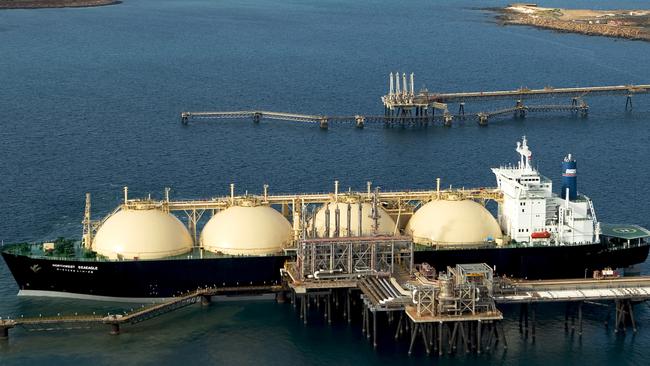Gas glut tipped to last another 10 years
The global LNG glut could last another decade or more, putting pressure on prices of our second-biggest export, warn analysts.

The global LNG glut that Australia’s resources boom has helped drive could last another 10 years or longer as more projects come on line and put pressure on contract pricing of the nation’s second-biggest export, according to Macquarie analysts.
The report casts doubt on recent statements from the industry and analysts that forecast a supply balance early next decade as Chinese demand increases and small-scale floating regasification terminals drive demand in smaller gas markets.
“We see global oversupply from operating and under construction projects lasting until 2022, but including advanced projects, this extends until 2027,” Macquarie said in a note to clients, despite acknowledging that 2017 demand had been stronger than anyone had expected.
“Two factors could shift oversupply out further, export plants running above nameplate and the rise of renewables.”
The bank said LNG contracts set for repricing negotiations over the next few years, including those held by Woodside Petroleum at its Pluto LNG project in Western Australia, were at risk.
“Woodside are maintaining a strong stance that they will not be impacted by Pluto repricing, whilst their Japanese buyers are focused on getting greater flexibility and removing destination restrictions,” Macquarie said.
“If the parties cannot agree, we expect discussions could end up in arbitration, as many others have done so over the past few years.”
Macquarie kept its underperform rating on Woodside but did not cut its target price of $28.10 per share.
It cut its spot LNG price forecast (as opposed to the oil-linked contract prices most Australian LNG is sold at) for next to year to $US5.25 per million British thermal units, from $US6.50, and its 2019 forecast to $US5, from $US6.13.
The supply that the bank says could keep the market oversupplied for most of next decade is likely to come from the US, Russia and Qatar.
The report came as the latest Gladstone port statistics show LNG from Queensland’s three LNG plants, on Gladstone’s Curtis Island, continued to increase exports but did not hit a record set late last year.
November exports of 1.704 million tonnes, representing an annual rate of 20.73 million tonnes, were up on October’s 1.68 million tonnes but shy of the 1.75 million tonnes exported in December last year.

To join the conversation, please log in. Don't have an account? Register
Join the conversation, you are commenting as Logout